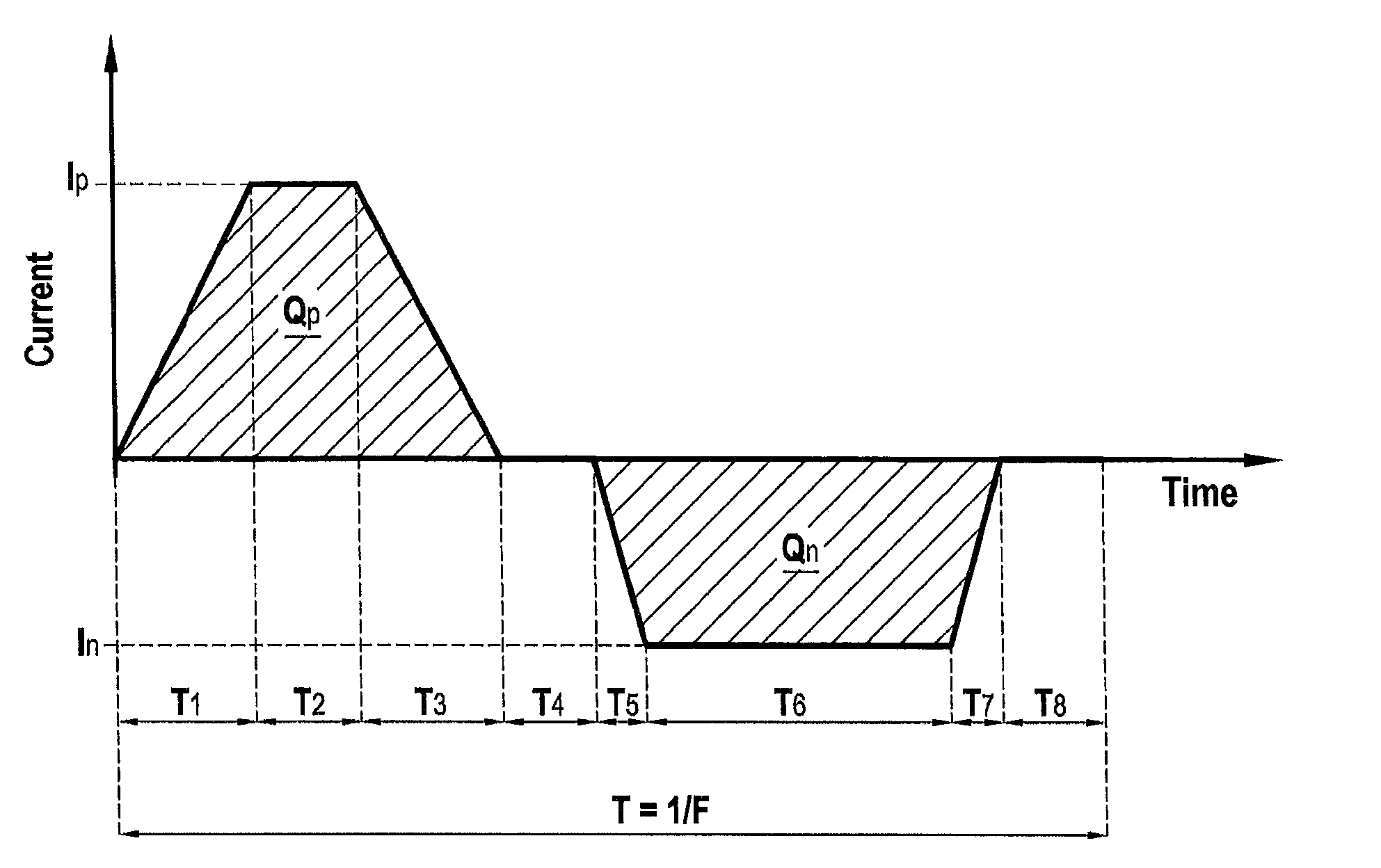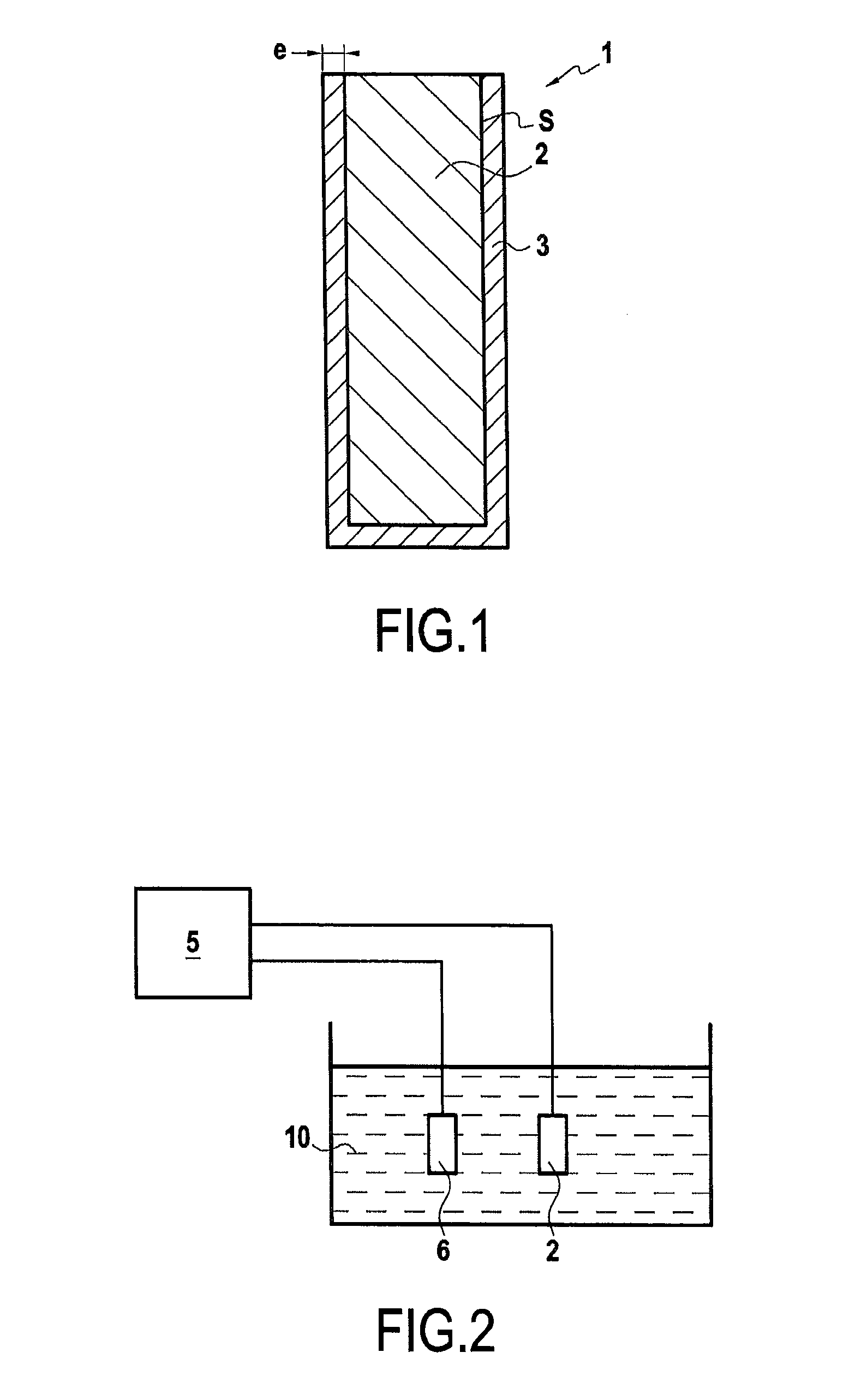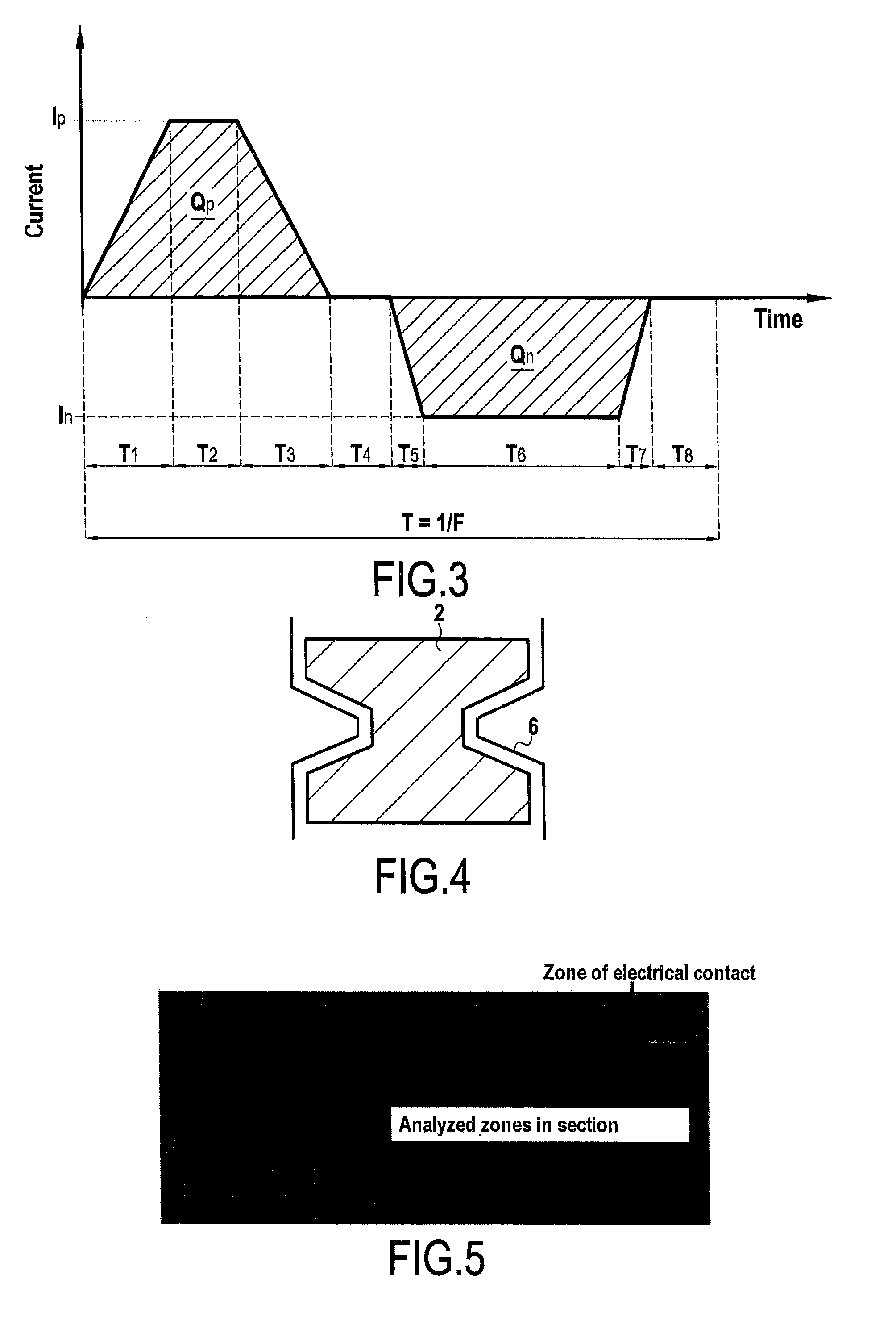Method for manufacturing a part coated with a protective coating
- Summary
- Abstract
- Description
- Claims
- Application Information
AI Technical Summary
Benefits of technology
Problems solved by technology
Method used
Image
Examples
example
[0080]A substrate was treated by a method of the invention. Table 2 below gives the operating conditions (the times are expressed as a percentage of the total duration of the current cycle). The imposed cycle comprised the same succession of stages as the current cycle shown in FIG. 3.
TABLE 2Composition of thebasic substratebefore thebeginning of theComposition of themicro-arc oxidationelectrolyte beforetreatmentthe beginning of(% atomic): MASCElectricalthe micro-arcalloy (described inparametersoxidation treatmentU.S. Pat. No. 5,942,055)I (A) = 11NaOH = 0.4 g / LNb = 47%R = In / Ip = 55%Na2SiO2,5H2O = 15 g / LTi = 25%Frequency = 100 HzpH 12-13Hf = 8%Qp / Qn = 0.87solvent = waterCr = 2%T1 = 11%Al = 2%T2 = 20%Si = 16%T3 = 2%T4 = 1%T5 = 3%T6 = 61%T7 = 2%
[0081]After about 30 minutes of treatment, self-regulation conditions were reached, characterized by progressive extinction of the electric arc. The samples continued to be treated for five additional minutes under self-regulation conditions so...
PUM
| Property | Measurement | Unit |
|---|---|---|
| Temperature | aaaaa | aaaaa |
| Fraction | aaaaa | aaaaa |
| Fraction | aaaaa | aaaaa |
Abstract
Description
Claims
Application Information
 Login to View More
Login to View More - R&D
- Intellectual Property
- Life Sciences
- Materials
- Tech Scout
- Unparalleled Data Quality
- Higher Quality Content
- 60% Fewer Hallucinations
Browse by: Latest US Patents, China's latest patents, Technical Efficacy Thesaurus, Application Domain, Technology Topic, Popular Technical Reports.
© 2025 PatSnap. All rights reserved.Legal|Privacy policy|Modern Slavery Act Transparency Statement|Sitemap|About US| Contact US: help@patsnap.com



